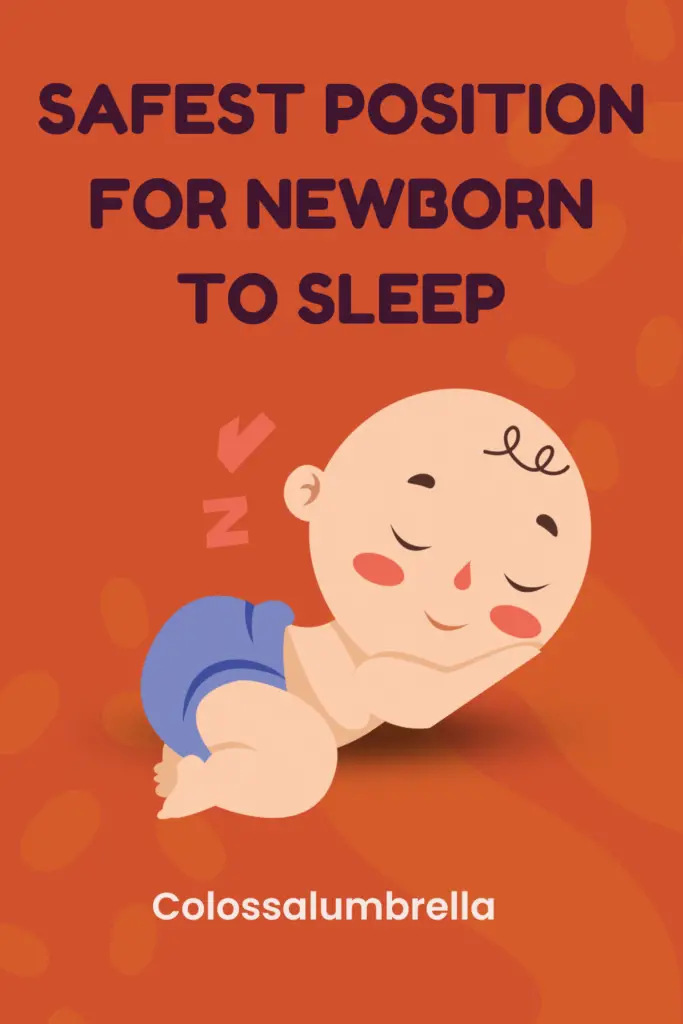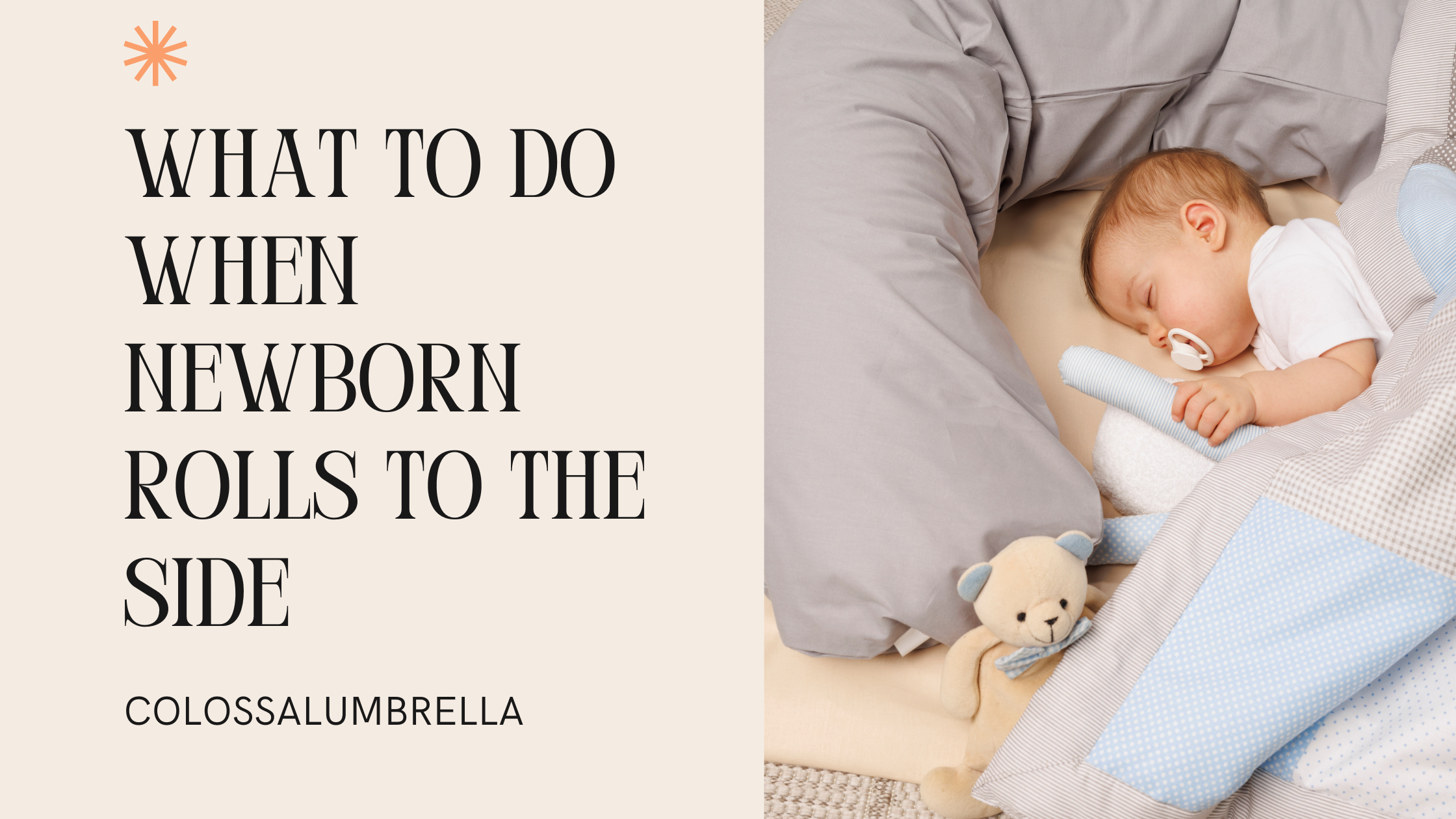Contents
Newborns rely on the mystical power of sleep to fuel their growth, facilitate their development, and maintain their general state of baby bliss. As doting parents, we embark on a quest to construct the ultimate dream haven, strictly following the sacred scrolls of safety guidelines. But lo and behold! What a curious conundrum arises when our tiny explorers take an unexpected detour and roll to the side in their sleep! It’s like a mini sleep-time rebellion!
Through this whimsical and informative blog post, we shall journey into the peculiar world of why newborn rolls to side while sleeping, uncover the reason behind the safety concerns that tag along, and equip you with a delightful arsenal of practical tips to keep your little rolling rockstar safe and sound in the land of slumber.
Understanding Newborn Sleep Patterns
Newborns sleep in cycles, alternating between light sleep, deep sleep, and active sleep. These cycles can last anywhere from 30 minutes to 3 hours. Initially, newborns sleep in a curled-up position, similar to how they were in the womb. As they grow, their sleep patterns change, and they start exploring different sleeping positions.
Subscribe to my blog for Parenting tips that will make you feel like a pro, and get access to exclusive free Printables that will keep your little ones busy and happy!
Why Do Newborn Rolls to Side While Sleeping?
The sight of your newborn rolling to the side might raise questions about their safety. Rest assured, it’s a normal part of their development. Several factors contribute to this behavior. Firstly, as your baby’s muscles develop and strengthen, they gain more control over their movements. Rolling to the side is a natural progression in their physical development. Additionally, newborns have reflexes and instinctual movements, such as the startle reflex, which can cause them to shift positions.
Understanding the Newborn Curl
When a newborn rolls to the side while sleeping, it is often due to a reflex called the “newborn curl.” This reflex is a result of the baby’s natural inclination to curl up into the fetal position, which they have grown accustomed to during their time in the womb. The newborn curl is more common in full-term babies who have spent their final weeks in a cramped space, while preterm babies are less likely to exhibit this reflex.
Is it Safe for Newborns to Sleep on Their Side?
While the safest position for newborns to sleep is on their back, there is no need for parents to become overly anxious if they find their baby has rolled onto their side during sleep. The newborn curl reflex is a normal physiological response that typically disappears after several weeks.
However, it’s essential to gently roll your baby back onto their back if you find them sleeping on their side. You don’t need to wake up obsessively during the night to check on them; just be mindful of their sleep position and make the necessary adjustments when you notice them on their side.
While newborn rolling to the side is a normal part of their development, it’s important to be aware of the potential safety concerns. One primary concern is the risk of suffocation or positional asphyxia. If your baby rolls onto their stomach and is unable to turn their head or lift it, it can restrict their breathing. This is why safe sleep guidelines recommend placing newborns on their back to sleep. It’s crucial to balance your baby’s developmental milestones with their safety.
The Safest Sleep Position for Newborns
Research shows that the safest sleep position for a newborn is on their back. Placing your baby on their back for sleep significantly reduces the risk of Sudden Infant Death Syndrome (SIDS) and other sleep-related hazards. It is essential to maintain this sleep position for the first year of your baby’s life, or until they can independently roll from their back to their tummy and vice versa.

Tips for parents when their newborn rolls to the side
- Making Side Sleeping Safer – If your newborn rolls to the side while sleeping, there are several steps you can take to ensure their safety and minimize the risks associated with this sleep position.
- Wait for Deep Sleep – Babies enter the deep sleep phase approximately 20 minutes after falling asleep. During this phase, they are less likely to wriggle and roll. Holding your baby for 20 minutes before transferring them to their crib or bassinet, or watching them during the first 20 minutes of sleep, can help ensure they remain on their back throughout the night.
- Remove Toys and Crib Bumpers – It’s crucial to keep your baby’s sleep environment free of toys, crib bumpers, and other objects that could pose a suffocation risk if they roll onto their side or tummy. Instead, opt for a bassinet with mesh sides that allow for safe airflow and provide a soft barrier.
- Upgrade from a Bassinet to a Crib – A crib offers more space than a bassinet, reducing the likelihood of your baby rolling into the edges while sleeping. Switching to a crib can create a safer sleep environment for your side-sleeping newborn.
- Stop Co-sleeping – Since rolling newborns are at higher risk of suffocation, avoid co-sleeping or using a bassinet with one side down. Ensure your baby has a separate sleep space to minimize potential hazards.
- Don’t Use a Sleep Positioner or Attempt to Prop Your Baby – Using sleep positioners, pillows, or rolled blankets to keep your baby on their back is not safe and can pose more risks. If you’re concerned about your newborn rolling, consult your pediatrician to discuss suitable options such as approved bassinets with features that help keep babies on their backs.
- Choose a Firm Mattress – A firm mattress is essential for your baby’s safety, as it prevents their face from sinking into the surface and obstructing their airway if they do roll onto their side or tummy. Ensure the mattress in your baby’s crib or bassinet is firm and flat.
Risks of Side Sleeping
While the newborn curl reflex is a natural and temporary behavior, side sleeping does come with certain risks.
- SIDS – Sudden Infant Death Syndrome (SIDS) is the leading concern associated with side sleeping. This unexplained and sudden death of a baby under one year of age is often linked to unsafe sleep practices, including sleeping on the side or tummy.
- Plagiocephaly – Persistent side sleeping can result in plagiocephaly, a condition where a baby’s head becomes flattened on one side. While this condition is typically not harmful, it may require intervention such as helmet therapy in severe cases.
- Torticollis – Babies who consistently sleep on one side may develop torticollis, a condition where the neck muscles on one side become tight and shortened. This can cause a baby to tilt their head or have difficulty turning it in one direction. Correcting sleep positioning can help resolve torticollis.
People Also Ask
When should I be concerned about my newborn rolling to the side while sleeping?
While the newborn curl reflex is normal and temporary, it’s essential to monitor your baby’s sleep position and gently roll them back onto their back if you find them sleeping on their side. If your baby rolls onto their side or tummy while swaddled, discontinue swaddling immediately. Consult your pediatrician if you have ongoing concerns about your baby’s sleep position.
How can I ensure my baby sleeps safely on their back?
To promote safe sleep, always place your baby on their back in a crib or bassinet with a firm, flat mattress. Keep the sleep environment free of toys, pillows, and crib bumpers. If necessary, consult your pediatrician to discuss suitable sleep products like approved bassinets designed to help keep babies on their backs.
Conclusion
It is normal for newborns to roll to the side while sleeping as part of their developmental milestones. While this behavior is natural, it’s crucial to prioritize their safety during sleep. Create a safe sleep environment, follow recommended guidelines, and regularly monitor your baby while they sleep. By striking a balance between your baby’s developmental needs and their safety, you can ensure peaceful nights for both you and your little one. Remember, always consult with healthcare professionals for personalized advice regarding your newborn’s sleep habits.
I would stay connected and keep you updated with parenting tips, pregnancy guides, creative ideas, easy crafts, and Free Printables. Subscribe to Colossalumbrella to get new ideas delivered to your inbox. Follow me on Facebook, Pinterest, Twitter, and Instagram.
Disclaimer: The content of this blog is for informational purposes only and is not intended to be a substitute for professional medical advice, diagnosis, or treatment. Always seek the advice of your physician or other qualified healthcare providers with any questions you may have regarding a medical condition.
